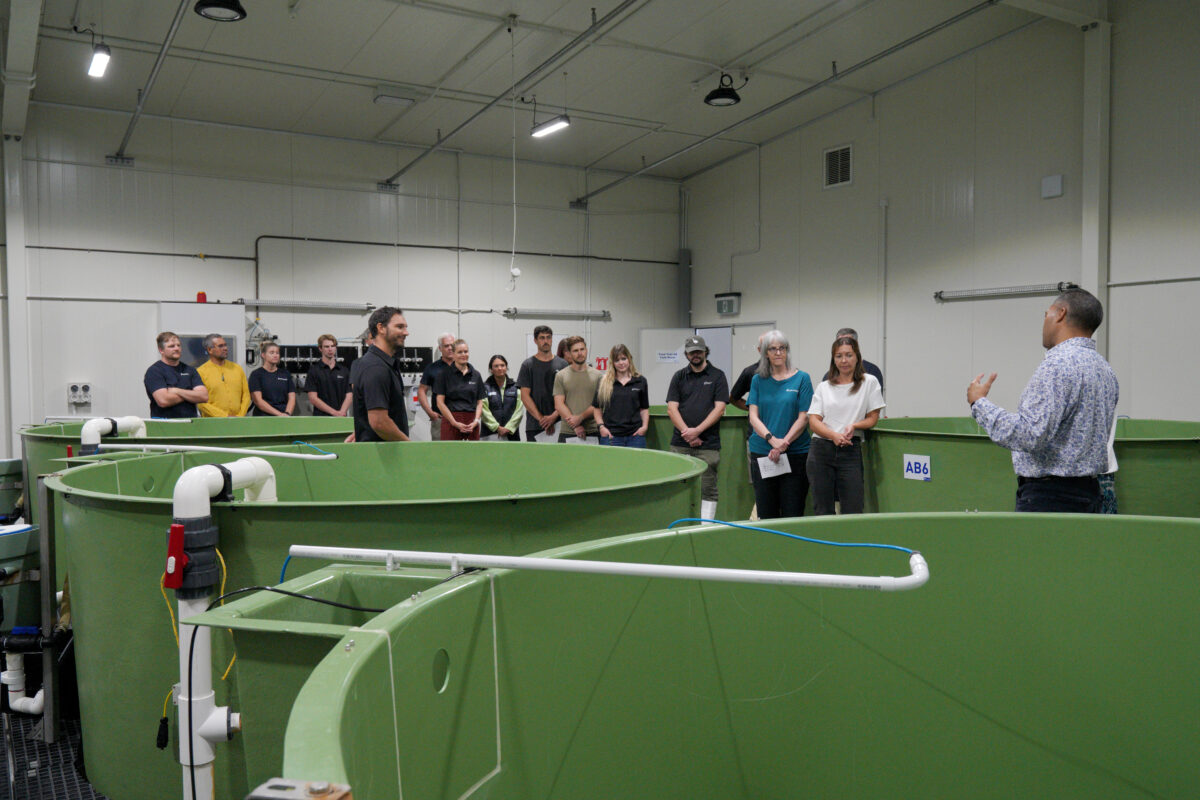Local Scientists Team Up to Help Snapper Handle Temperature Extremes
20 February 2025
In a fin-tastic collaboration, researchers at Cawthron and Plant & Food Research based in Whakatū Nelson are diving into the science of thermotolerance in finfish. Their research is part of the MBIE funded Climate Adapted Finfish research programme, led by Cawthron. Their goal? To help snapper/tāmure (and other species) thrive in both cooler and warmer waters.
Last week, the team at Plant & Food Research, based at Port Nelson, oversaw the careful delivery of more than a thousand juvenile snapper to Cawthron’s Aquaculture Park in Glenduan. These little swimmers are about to embark on an important mission—being monitored at different temperatures to see how they perform. Think of it as fish boot camp, but instead of push-ups, it’s all about resilience.
Programme leader and Cawthron senior aquaculture scientist Dr. Jane Symonds says these trials will help shape future breeding programmes.
“We’ve been running these kinds of studies with salmon for quite some time and recently discovered that thermotolerance is a heritable trait in King salmon—which is great news for future-proofing the species. But we haven’t yet done this work for other high-interest species like snapper,” Symonds explains. “This programme will give us a much clearer picture of how these fish will respond to climate change.”
The results will have broad implications, not just for commercial fisheries and aquaculture but also for the conservation and management of wild stocks.
“We already know that climate change is heating up our oceans, and this has real consequences for marine life,” says Symonds. “By getting ahead of the curve, we can gain the knowledge needed to breed for climate resilience—helping to protect both industry and biodiversity.”
Plant & Food Research, key partners in the Programme, bring 20 years of expertise in snapper breeding to the table.
“We’re incredibly fortunate to be working with their Nelson-based team, led by Dr. Maren Wellenreuther, as well as our partners at NZ King Salmon,” says Symonds. “And it doesn’t stop there—we’re also collaborating with AgResearch, GNS Science, Te Arawa Fisheries, the universities of Auckland and Otago, Taiuru & Associates, and AbacusBio. It’s a true team effort, and together, we’re making waves in climate adaptation research.”
So, while these juvenile snapper are busy adjusting to their new temperature-controlled digs, the researchers behind the scenes are working hard to ensure that future generations of fish—and the industries and ecosystems that depend on them—can adjust to climate change.

Image: Cawthron Institute. A group of researchers and technicians from Plant & Food Research and Cawthron Institute gather at Cawthron’s Finfish Research Centre for a blessing of the snapper/tāmure.